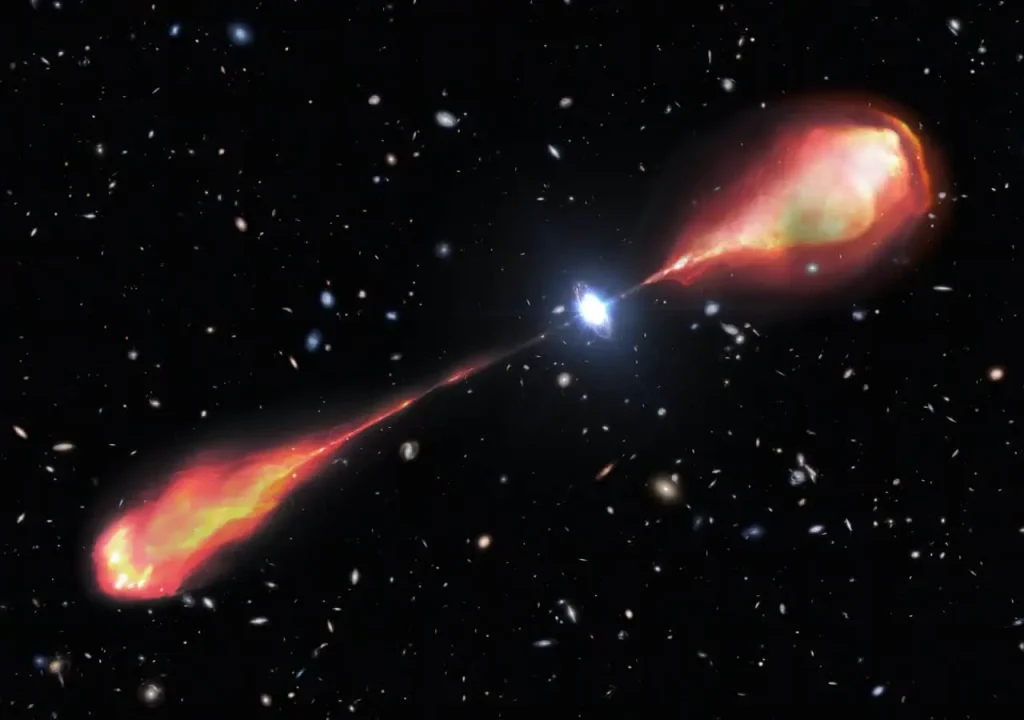In a groundbreaking astronomical discovery, researchers have identified the largest known radio jet in the early universe, extending more than 200,000 light-years—twice the size of the Milky Way galaxy. This phenomenon originates from a distant quasar, a supermassive black hole actively feeding on surrounding matter while expelling powerful streams of energy.
A Milestone in Cosmic Exploration
The discovery was made using data from the Low Frequency Array (LOFAR) telescope network in Europe, along with observations from the Gemini North telescope in Hawaii. This radio jet, previously undetectable due to cosmic microwave background interference, offers new insights into the role of quasars in shaping the structure of the universe.
The Significance of This Finding
- Black Hole Influence: The radio jet suggests that supermassive black holes played a crucial role in the early universe, affecting galaxy formation by expelling energy and particles into space.
- Quasar Power: The quasar responsible for this massive jet has a black hole nearly 450 million times the mass of the Sun, emphasizing the extreme environments of these cosmic giants.
- Cosmic Evolution: Understanding these jets can help scientists uncover how galaxies and large-scale cosmic structures evolved over billions of years.
Unlocking the Secrets of the Universe
Published in the Astrophysical Journal Letters, this discovery highlights the importance of advanced telescopes and international collaboration in pushing the boundaries of space exploration. As technology improves, astronomers hope to uncover even more colossal structures, further unraveling the mysteries of the cosmos.



Comments (0)
No comments yet. Be the first to comment!
Leave a Comment